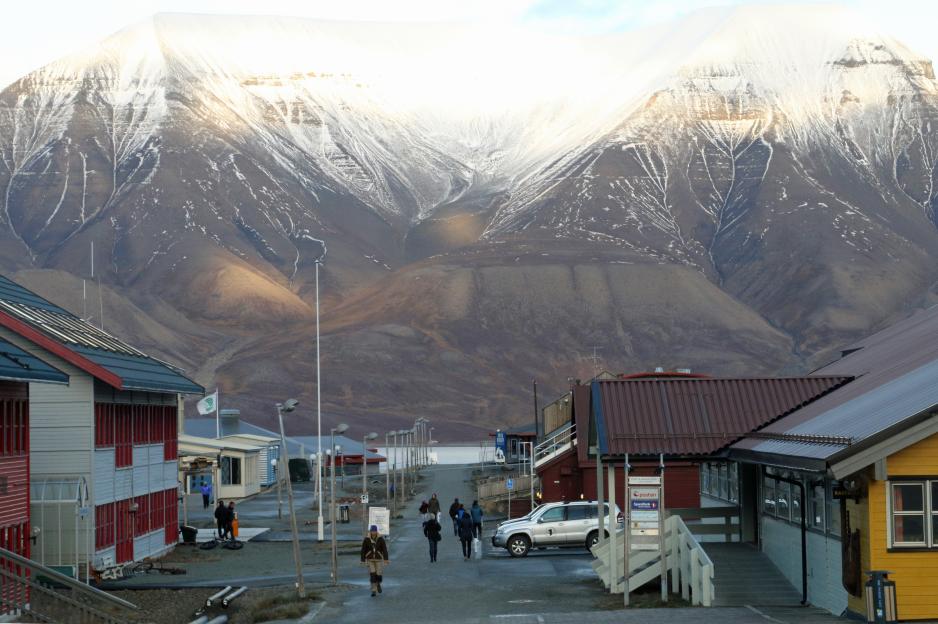Arne O. Holm says Should People Be Living on Svalbard?

Should people really be living in Longyearbyen? (Photo: Arne O. Holm)
Commentary: A parliament white paper is often followed by political measures. On Svalbard, things are different. Here, the political decisions come first, and the discussions follow. Should people really be living in Svalbard?
This is a comment, written by an editorial staff member. The commentary expresses the author's views.
The question posed in the lead is from the opening chapter of a book I wrote with historian Thor B. Arlov about 20 years ago. The book was called "From company town to democracy" and described, as the title suggests, Longyearbyen's transformation from a mining community to a local democracy.
A vital local democracy
It was a vital local democracy, even, from how we understood it back when the political processes were carried out around the turn of the millennium. It was a democratization process of a rare kind, carried out at a record pace.
The issue of whether there should be people living in Longyearbyen is based on the unnatural aspect of building a community more than halfway between the European mainland and the North Pole. And on top of that, on an archipelago in the middle of the Arctic Ocean with no natural resources to create a living off. Not to mention a coal-black polar night if one decides to winter there.
Today, Longyearbyen is just a short flight away from the mainland. Longyearbyen and Svalbard have gained increased strategic significance in a very restless world. Considering that Russia has a permanent settlement on Svalbard, Barentsburg, we have a roaring yes to the initial question.
Security policy
People should live on Svalbard, and the Svalbard white paper scheduled for this year is supposed to answer how such a settlement will look for the next ten years. For the first time, a Svalbard white paper would also assess the security policy situation. The latter was used as an independent argument to speed up the white paper.
The government is confronted with previous attitudes.
But if the answer to whether people should live on Svalbard is a roaring yes, then another question is whether the local democracy, established in October 2022, is as vibrant as one believed back then.
That would also be interesting to read about in the new white paper.
Yet, before the white paper is presented, the government has already withdrawn the right to vote for foreign citizens. There are differing opinions about that. Nonetheless, a more resolute and less discussed attack on a democratic model cannot be easily found in other democratic states.
Gravity
Part of the explanation is that one of the government's main objectives for Longyearbyen is to reduce the number of foreign citizens. That is a stated objective long before the white paper is launched.
In addition to preempting the white paper, the government is confronted with its previous attitudes. Shutting down the coal industry while investing in tourism has led to gravity playing its part, and the number of Norwegian citizens has decreased in favor of foreigners. Today, only 64 percent of the inhabitants of Longyearbyen hold a Norwegian passport. The share has never been smaller.
A fatal blow to the city's sustainability.
Longyearbyen's power supply dramatically changed even before the Svalbard white paper, by going from local coal to imported diesel. In addition to a highly uncertain strategic mode of operation, one consequence is increased energy prices. We are talking about a total increase from NOK 130 million to NOK 269 million.
That is nearly double.
Albeit, the local council gets to play a part in distributing energy prices. The model currently on the table is making local businesses sweat. In a campaign signed by some of the most prominent actors on the island, the decision is described as a "fatal attack, risking the entire city's sustainability."
Sabotage
Even for the privately employed, who pay their own expenses in contrast to the state employees, it is practically impossible to reduce the power consumption. In an apartment in Frogner, Oslo, one can turn down the temperature a few degrees and still afford an exclusive Chardonnay or whatever one drinks there. That is now how electricity consumption works at 78 degrees north.
To truly preempt the Svalbard white paper, and also sabotage the objective of the number of Norwegians on this Arctic islet, the freedom to roam in nature has become increasingly more limited. The sum of restrictions affects both the local population and the tourism industry.
The state is ripping off the local democracy.
The protests have been as numerous as they have been futile.
Protests were also held when the local democracy was established in Longyearbyen. Not all who chose a few years in the Arctic were enthusiastic about a bureaucratic council on their tails. Now, the state is slowly robbing local democracy of influence.
Without the people
So, what do we need the Svalbard white paper for when the parliament and government have already adopted changes of major significance for the inhabitants of Longyearbyen?
Svalbard is of greater geopolitical significance than ever and requires strong state measures.
However, geopolitics without the people's support is a bad solution, both on Svalbard and the Norwegian mainland.




